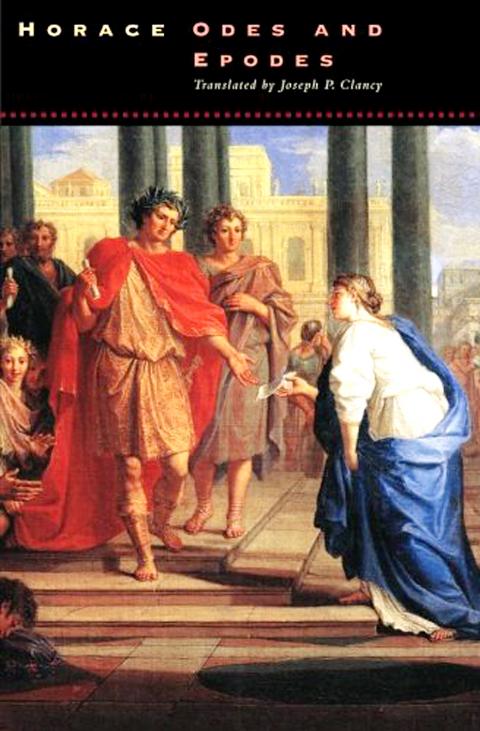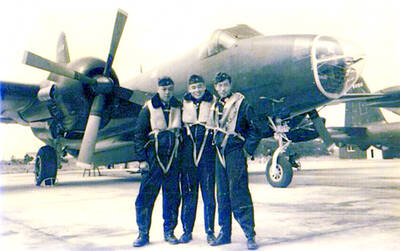Quintus Horatius Flaccus, known in English as Horace, has always been the best-loved Latin poet after Virgil. From the Renaissance to the beginning of the 20th century, there had been 90 translations of his Odes into English, and 100 into French. Robert Browning was made to learn all of them, in Latin, by heart as a boy. He remains the most imitated and enthused over Roman lyric poet there has ever been.
What are the reasons for this celebrity? The case against him would say that he symbolized gentlemanly breeding and good taste, and a slavish obedience to authority, and that he was forced down the throats of upper-class English students for centuries to produce in them just these qualities. Ezra Pound, despite making fine translations of some of his poems, described him as “bald-headed, pot-bellied, underbred, sycophantic.” After all, it was Horace who penned the words “Dulce et decorum est pro patria mori” (it is a sweet and fine thing to die for your country), dubbed by Wilfred Owen during the horrors of World War I as “the old lie.”
But even if some of this is true, Horace has the virtues of his shortcomings. He’s essentially urbane, tolerant, ironic and self-mocking. In Latin his poems are apparently miracles of ingenuity and technical sophistication, copying difficult Greek models. Virgil wrote his great epic about war, following in the footsteps of Homer, but Horace writes about country life on his estate, and frustrated love affairs. Yet whether writing about his patron, the rich nobleman Maecenas, or the ancient myths, he remains cool, detached and elegantly skeptical.

Virgil and Horace knew each other, and were both under the patronage of the emperor Augustus, being deemed exemplars of the greatness of the Latin language. Horace’s father, though, was a freed slave, and Horace was given his estate by Maecenas, probably at Augustus’s bidding. He was consequently able to devote his life to poetry, and is even reputed to have turned down the chance to become Augustus’s private secretary.
This Odes and Epodes of Horace contains translations dating back to 1960, but Chicago University Press has re-issued it, and in a very attractive cover. Joseph Clancy’s versions are characterized by modern colloquialisms within a framework of formal dexterity. They well deserve this re-appearance.
So what are some of Horace’s most famous poems? A.E. Housman, author of A Shropshire Lad (1896), and professor of Latin at Cambridge, thought Odes 1V.7 (beginning “Diffugere nives,” the snow has melted) was the most beautiful poem the Romans or Greeks ever produced, and translated it into English.
Then there’s Odes 1.11, finely rendered by Clancy, and which Pound also translated. It contains the famous phrase “carpe diem” (seize the day), well-known to all who remember Robin Williams and the 1989 film Dead Poets Society. The theme is an ancient one, that we only have this life, and it’s best to enjoy it while we can. Clancy memorably translates the concluding lines as follows:
Be sensible: strain the wine: in a little life, take no long looks ahead. As we talk, time spites us and runs: reap today: save no hopes for tomorrow.
Particularly famous, too, is Odes 1V.1, rendered with extreme power by Tom Stoppard as the closing effect of Act One of his 1997 play about Housman, The Invention of Love. Horace feels himself falling in love again, but protests to Venus that he’s too old for such wars. Horace, like so many Roman men, seems to have been essentially bi-sexual, and in this poem he’s fallen for a youth called Ligurinus. Clancy translates the ending strongly, but I prefer the version found in Stoppard:
At night I hold you fast in my dreams, I run after you across the Field of Mars, I follow you into the tumbling waters, and you show no pity.
Another poem, Odes 1.9, has found its way into history. Patrick Leigh Fermor translated it in his schooldays, and when during World War II he captured a German general on Crete, and the general quoted the opening words, Fermor was able to recite the whole poem in Latin to him. After this, captive and captor got on well.
Horace’s poems had been one of only three books Fermor took with him on his youthful walk across Europe, described in A Time of Gifts (1977) and its successors. “The whole point of Horace,” Fermor wrote, “is tautness and concentration and perfection.”
Byron also featured Odes 1.9 in his best-selling travel poem Childe Harold’s Pilgrimage (1812-1818). Horace’s poem describes Mount Soracte, north of Rome, and when Byron sees the mountain he immediately recalls his predecessor. The poet “whom I hated so” gave him no pleasure at school, he writes. “Then fare thee well – upon Soracte’s ridge we part.” But the fault, he admits, probably lay with his teachers.
For the rest, Swift imitated Odes 1.14, Odes 2.1 and Odes 3.2. Thackeray wrote a light-hearted parody of Odes 1.38 (an attack on Persian elegance), calling for an English leg of mutton for dinner rather than French truffles. Gladstone published a verse translation of all the odes in 1894, at the age of 85. Marvell’s Horatian Ode was inspired by Odes 1.37. Milton’s translation of Odes 1.5 is, according to The Classical Tradition (2010) “generally regarded as the worst rendition in English.”
What else? Shakespeare may well have been remembering Odes 3.30 when he wrote in Sonnet 55 “Not marble, nor the gilded monuments of princes, shall outlive this powerful rhyme.” Horace begins his ode “Exegi monumentum aere perennius,” which Clancy translates “My memorial is done: it will outlast bronze”.
And Keats was clearly remembering the start of Epode 14 when he wrote the opening of his Ode to a Nightingale. Clancy translates “Why has an easygoing slackness suffused all my senses with such a deep forgetfulness, as if my feverish lips had drunk to the dregs from the bowl that brings on the sleep of Lethe?” Keats wrote:
My heart aches, and a drowsy numbness pains
My sense, as though of hemlock I had drunk,
Or emptied some dull opiate to the drains
One minute past, and Lethe-wards had sunk.
Horace, then, remains indispensible. Tom Stoppard is probably the first English dramatist for 400 years who’s been able to move an audience to tears with words in Latin (previously carefully explained). And the words he quotes are Horace’s.

Most heroes are remembered for the battles they fought. Taiwan’s Black Bat Squadron is remembered for flying into Chinese airspace 838 times between 1953 and 1967, and for the 148 men whose sacrifice bought the intelligence that kept Taiwan secure. Two-thirds of the squadron died carrying out missions most people wouldn’t learn about for another 40 years. The squadron lost 15 aircraft and 148 crew members over those 14 years, making it the deadliest unit in Taiwan’s military history by casualty rate. They flew at night, often at low altitudes, straight into some of the most heavily defended airspace in Asia.

Beijing’s ironic, abusive tantrums aimed at Japan since Japanese Prime Minister Sanae Takaichi publicly stated that a Taiwan contingency would be an existential crisis for Japan, have revealed for all the world to see that the People’s Republic of China (PRC) lusts after Okinawa. We all owe Takaichi a debt of thanks for getting the PRC to make that public. The PRC and its netizens, taking their cue from the Chinese Communist Party (CCP), are presenting Okinawa by mirroring the claims about Taiwan. Official PRC propaganda organs began to wax lyrical about Okinawa’s “unsettled status” beginning last month. A Global

Taiwan’s democracy is at risk. Be very alarmed. This is not a drill. The current constitutional crisis progressed slowly, then suddenly. Political tensions, partisan hostility and emotions are all running high right when cool heads and calm negotiation are most needed. Oxford defines brinkmanship as: “The art or practice of pursuing a dangerous policy to the limits of safety before stopping, especially in politics.” It says the term comes from a quote from a 1956 Cold War interview with then-American Secretary of State John Foster Dulles, when he said: ‘The ability to get to the verge without getting into the war is

Like much in the world today, theater has experienced major disruptions over the six years since COVID-19. The pandemic, the war in Ukraine and social media have created a new normal of geopolitical and information uncertainty, and the performing arts are not immune to these effects. “Ten years ago people wanted to come to the theater to engage with important issues, but now the Internet allows them to engage with those issues powerfully and immediately,” said Faith Tan, programming director of the Esplanade in Singapore, speaking last week in Japan. “One reaction to unpredictability has been a renewed emphasis on